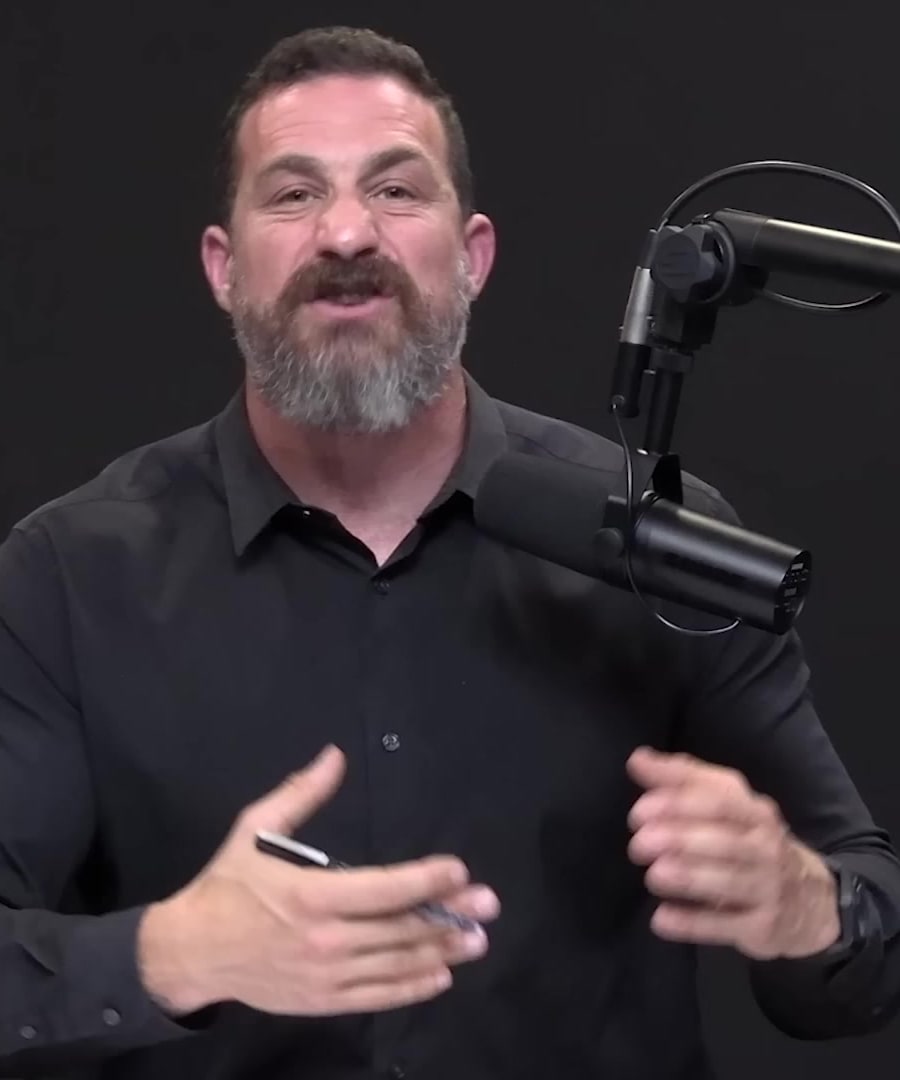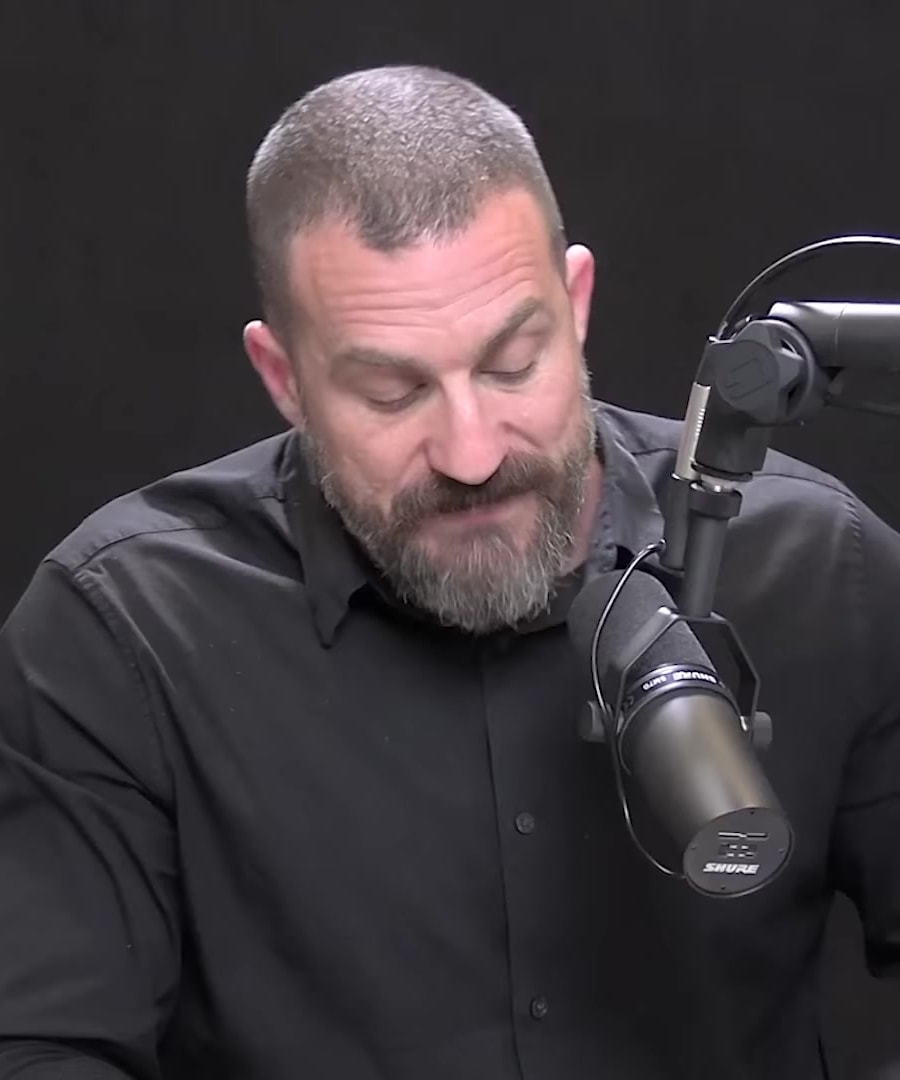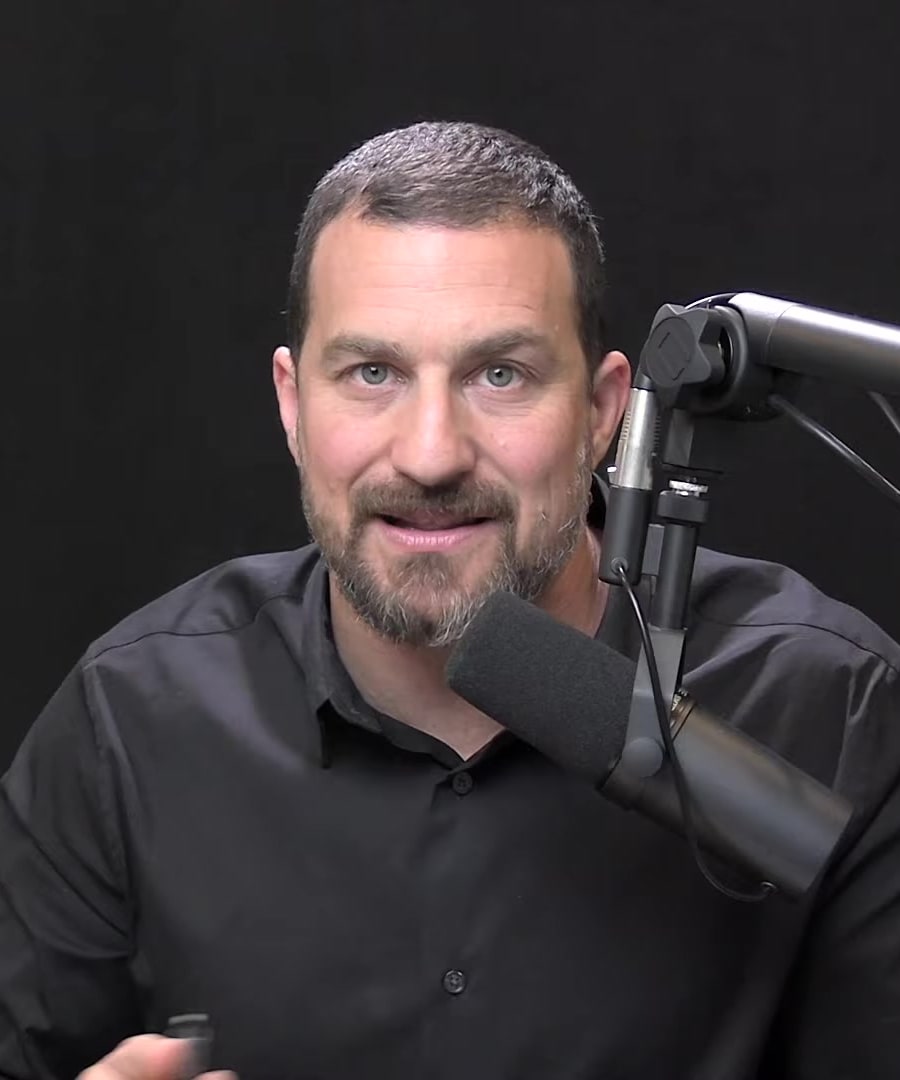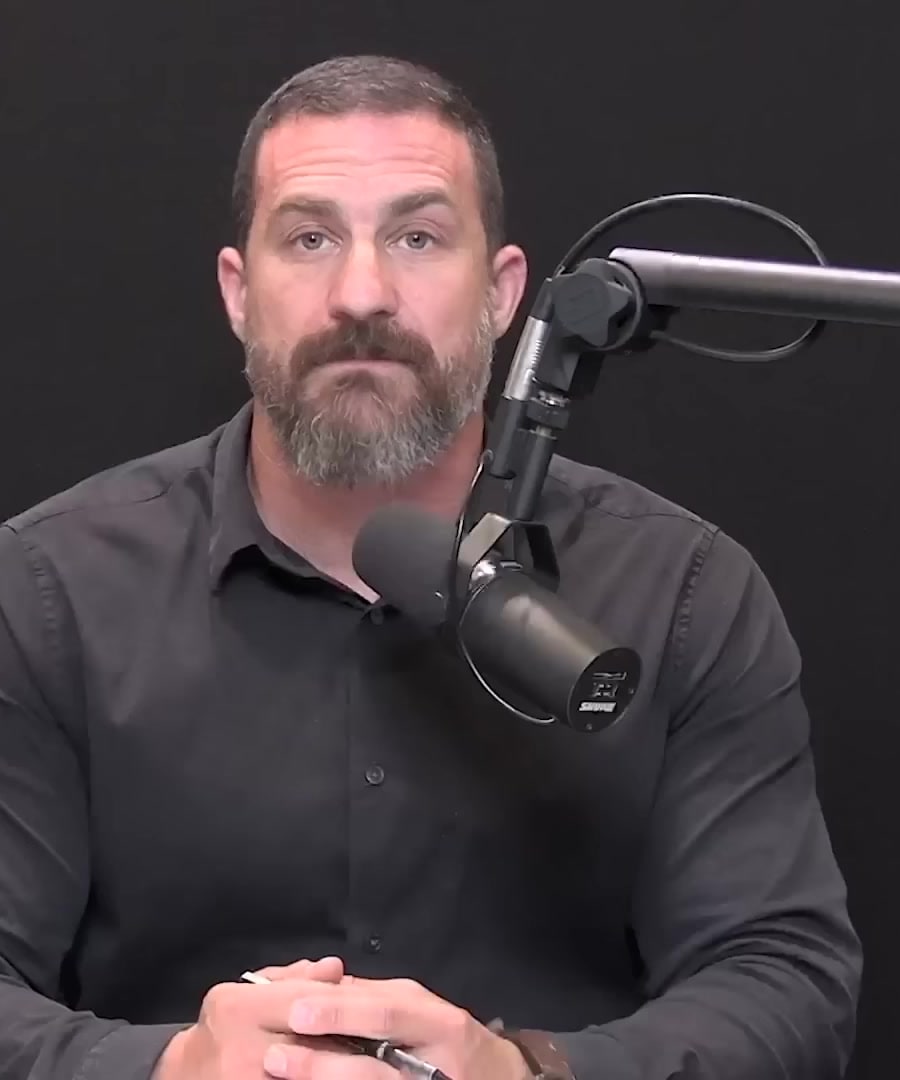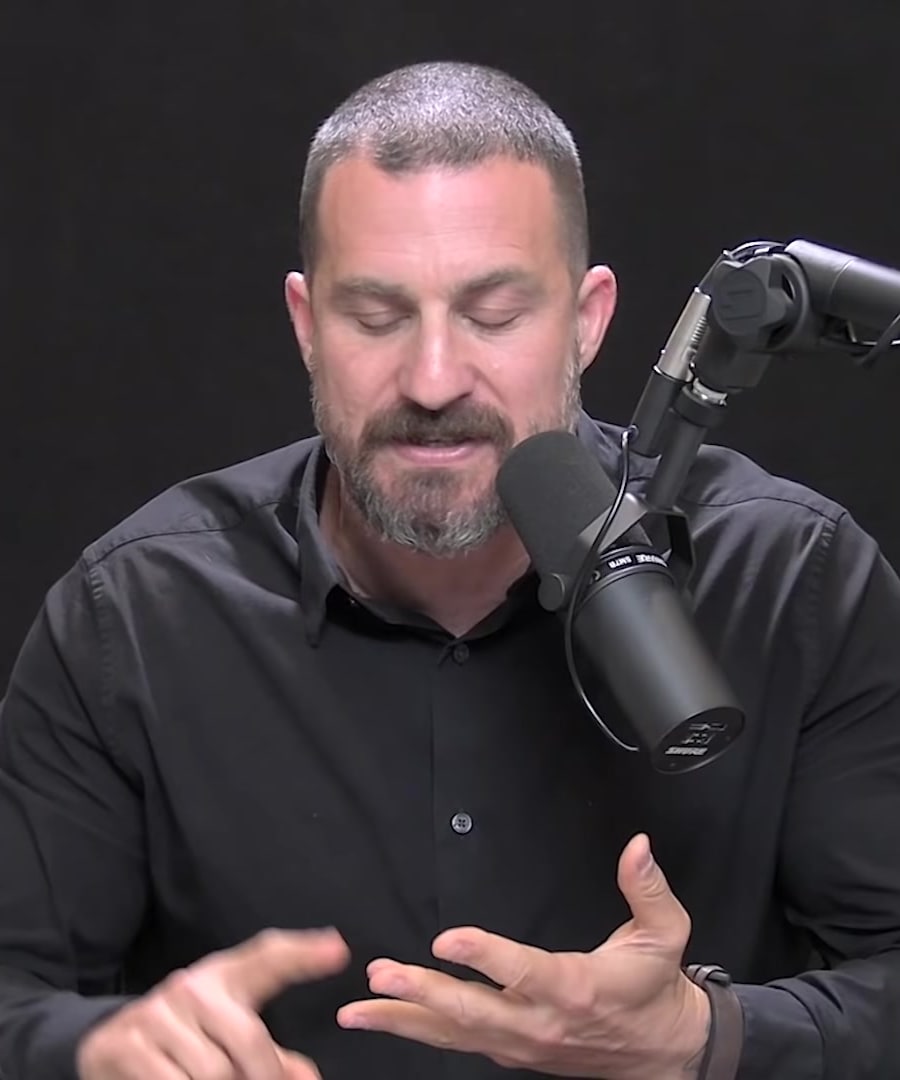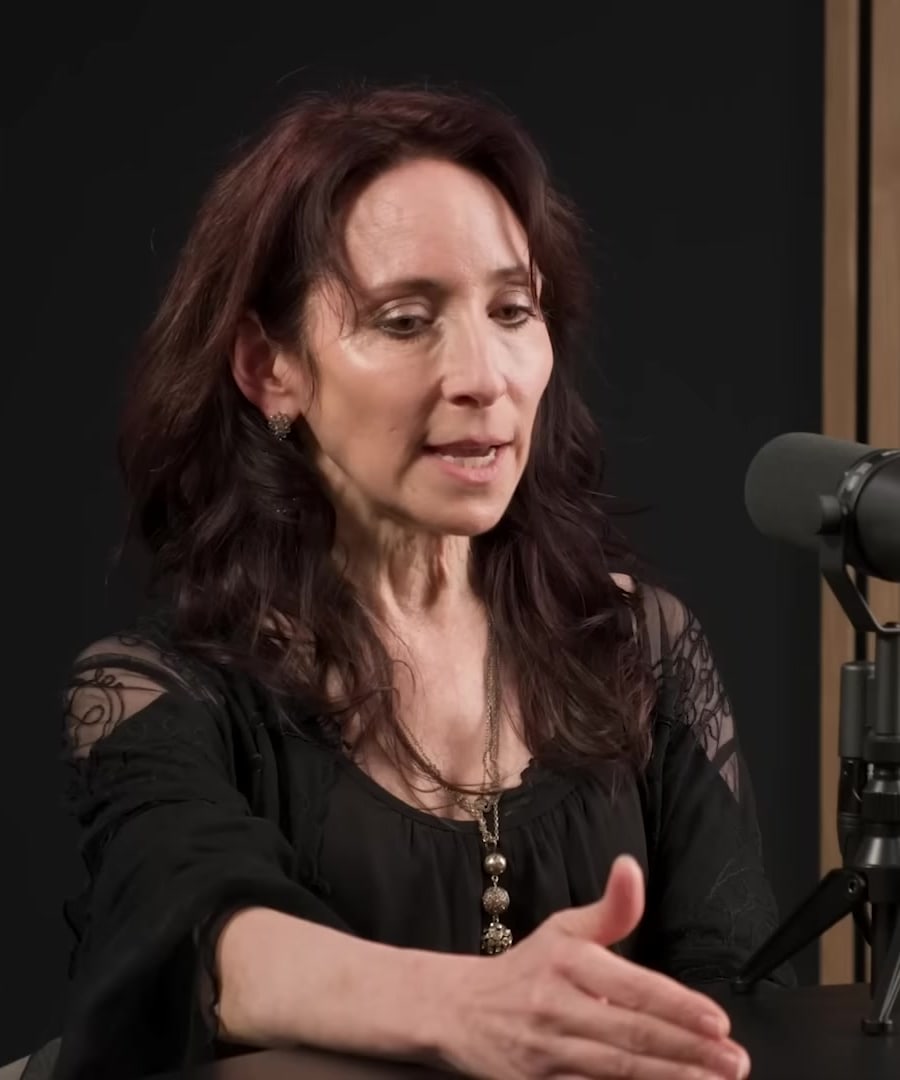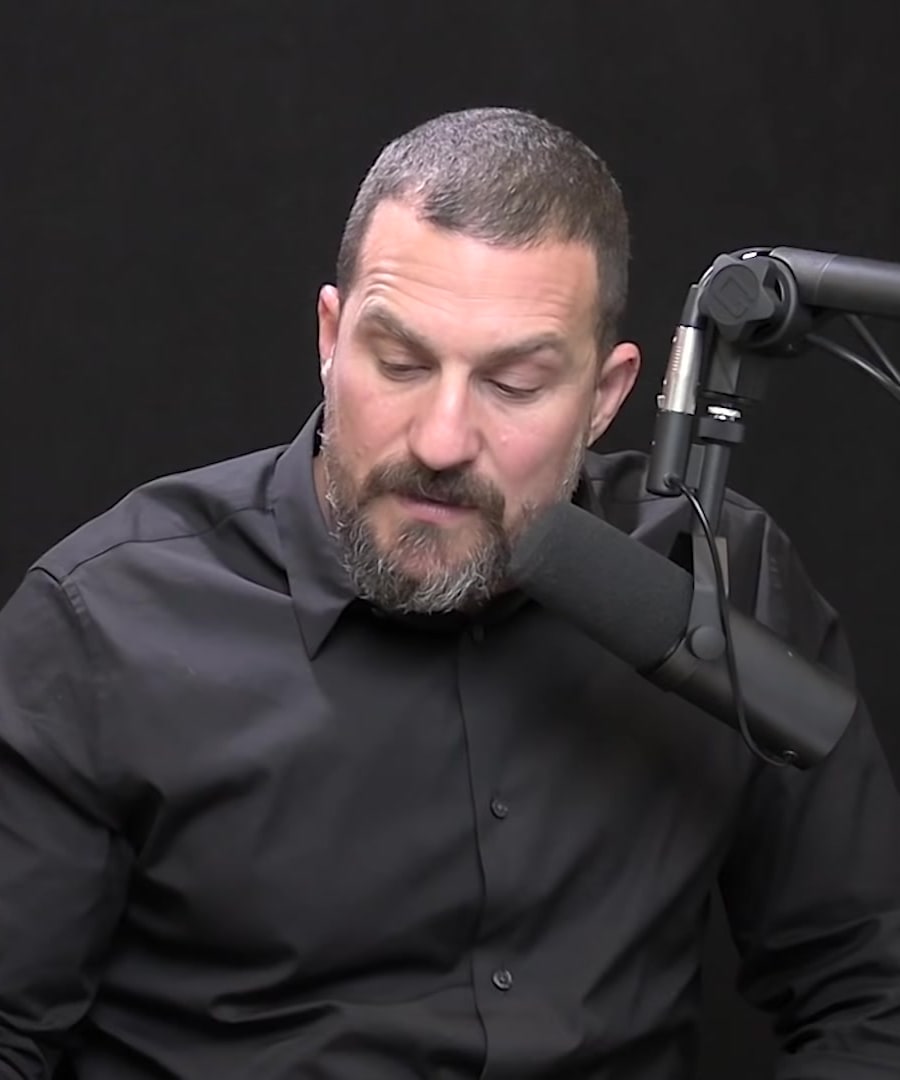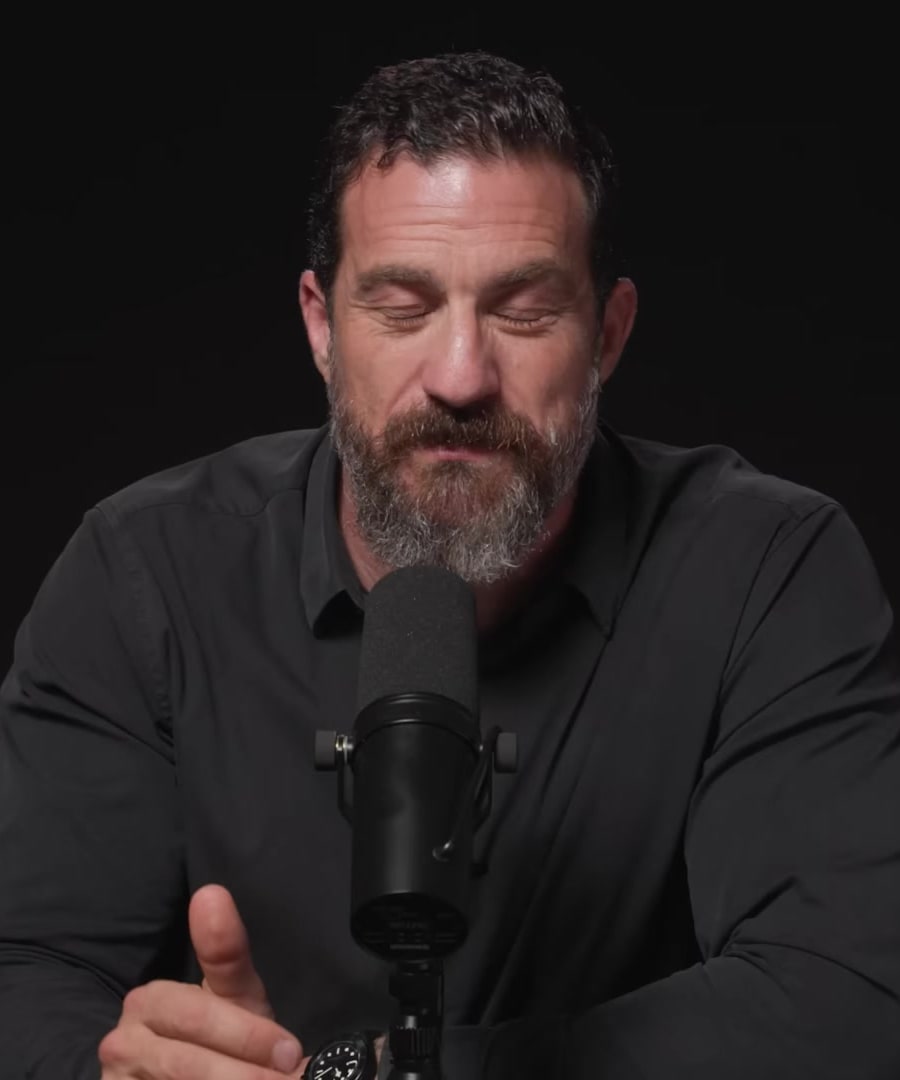Best protocols for reducing anxiety
Sources:
To address anxiety, the suggests several effective protocols:
-
Journaling: Writing about traumatic events has been shown to reduce anxiety and improve immune function. This involves writing about stressful experiences, which enhances immune responses and aids in mental health recovery. A consistent practice of journaling can bring long-term benefits [1].
-
Breathing Protocols: The podcast highlights specific breathing techniques to recalibrate the body's response to stress:
- Calming Protocols: Using paced breathing to intentionally calm the body.
- Breathwork for Autonomic Arousal: Engaging in breathing techniques that increase alertness and resilience to stress [2].
- Physiological Sigh: A five-minute breathing protocol involving repeated cycles of double inhales through the nose followed by a long exhale through the mouth. This method has been shown to significantly improve mood and reduce anxiety [3].
-
Hypnosis: The podcast recommends utilizing hypnosis for managing anxiety. An app called Reveri offers clinically approved hypnosis protocols focused on anxiety reduction and enhancing creative and cognitive functions. These short sessions can help direct the brain toward relaxation and mental focus [4].
-
Mindfulness and NSDR Protocols: Techniques like meditation and non-sleep deep rest (NSDR), including yoga nidra and hypnosis sessions, help teach the nervous system to relax and manage stress effectively [5].
RELATED QUESTIONS-
I'd like to learn more about mindfulness and NSDR protocols for anxiety reduction.
Sources:
Mindfulness and Non-Sleep Deep Rest (NSDR) protocols are effective tools for reducing anxiety by promoting relaxation and mental clarity. Here is an overview of these practices based on the knowledge shared by in the :
Non-Sleep Deep Rest (NSDR)
- Definition and Benefits: NSDR is a term for various behavioral practices that lead to deep relaxation. It helps with anxiety, sleep issues, and cognitive performance by restoring dopamine levels critical for motivation and control [1].
- Practices Included: NSDR includes meditation, yoga nidra, and hypnosis, all of which shift the state toward relaxation. Hypnosis, in particular, is noted for its ability to focus on specific outcomes and accelerate learning [2].
Mindfulness
- Long-Term Benefits on Mental Health: Studies show that mindfulness interventions can lead to sustained improvements in mental health. A notable example from the podcast involves a study where a mindfulness intervention during pregnancy had long-lasting positive effects on both mothers and their children's health and stress responses [3].
Practical Steps
- Availability and Access: has made a zero-cost NSDR script available on YouTube. This can be accessed by searching "Huberman NSDR" on YouTube. It differs from yoga nidra by lacking mystical elements and focuses more on science-backed components like long exhale breathing [1].
- Daily Practice: Implementing NSDR or mindfulness daily helps train the brain to handle anxiety and stress more effectively and promotes better sleep and relaxation [4].
These practices are not only helpful for immediate relief from anxiety but also offer long-term benefits for mental health and cognitive function, as demonstrated through various studies discussed on the podcast.
RELATED QUESTIONSCan you provide a detailed explanation of different NSDR practices?
Sources:
Non-Sleep Deep Rest (NSDR) encompasses various practices aimed at achieving deep relaxation to enhance brain and body function. Here’s a detailed explanation of different NSDR practices as discussed by :
1. Meditation
- Varieties: Numerous forms exist, including transcendental meditation, loving kindness meditation, third eye meditation, and walking meditation. These forms help in achieving a state of deeper relaxation and have been supported by robust scientific literature [1].
2. Yoga Nidra
- Practice: Involves lying down, often with no physical movement, focusing on long exhale breathing to facilitate deep relaxation. Unlike other forms that might include physical poses, yoga nidra focuses solely on mental relaxation techniques [1].
3. Hypnosis
- Unique Qualities: Hypnosis is distinctive among NSDR practices for its directed approach towards specific outcomes. It's especially beneficial for accelerating plasticity and learning within the brain. Hypnosis can be targeted more precisely compared to other relaxation techniques [1].
Practical Implementation
- Accessibility: has made a 10-minute NSDR protocol available on YouTube, which is similar to yoga nidra but without mystical components, focusing on long exhale breathing and shifts from cognitive to sensory perception. This resource is free and can be found by searching “Huberman NSDR” on YouTube [2].
Scientific Support and Benefits
- Enhanced Learning and Recovery: Research shows that NSDR can improve recovery, enhance learning, and increase information retention. It’s particularly effective post-learning, helping to consolidate and retain new information [3].
- Restorative Effects: NSDR enhances cognitive and physical vigor and can be effective even after sleep loss, helping users regain mental and physical capabilities [4].
NSDR practices offer a range of methods to achieve deep relaxation, each with unique benefits and suitable for different objectives, from general relaxation to specific cognitive enhancements.
RELATED QUESTIONSShow me practical guides on how to perform NSDR.
Sources:
For practical guidance on how to perform Non-Sleep Deep Rest (NSDR), you can refer to the following resources provided by :
1. General Guide on NSDR Protocols
- Resource: A publicly available 10-minute NSDR protocol is available on YouTube. Search for "Huberman NSDR" to find the specific script. This protocol involves long exhale breathing and shifts from cognitive to sensory perception, making it suitable for daily practice.
- Accessibility: This protocol is designed to be non-spiritual and science-based, focusing on physiological relaxation without complex or mystical components [1].
2. Detailed NSDR and Yoga Nidra Resources
- Resource: Various NSDR scripts, including those for yoga nidra, are available free of cost. These scripts can be found on platforms like YouTube by searching "Huberman NSDR."
- Description: These protocols typically involve lying down and engaging in deep relaxation practices, such as guided breathing and body scans. They are suited for both beginners and those familiar with relaxation techniques [2].
3. Specific NSDR Script Read by Andrew Huberman
- Resource: A detailed NSDR script read by is available for free on YouTube. This script explicitly avoids mystical elements and focuses on practical relaxation techniques.
- Details: The script involves long exhale breathing and shifts in perception, aimed at enhancing relaxation and recovery. Search "Huberman NSDR" on YouTube to access this specific session [1].
These resources are designed to be accessible and easy to use, allowing individuals to engage in NSDR practices to improve relaxation, enhance recovery, and support overall well-being.
RELATED QUESTIONSShow me NSDR protocols by Andrew Huberman.
Sources:
The Non-Sleep Deep Rest (NSDR) protocols as outlined by include various strategies to help individuals achieve deep relaxation and enhance cognitive and physical recovery. Here are some specific NSDR protocols discussed by Dr. Huberman:
-
General NSDR Protocol:
- Purpose: Achieve deep relaxation, restore dopamine levels, and enhance recovery.
- Description: It includes long exhale breathing and perceptual shifts from thinking to sensation.
- Accessibility: A free 10-minute NSDR script read by Dr. Huberman is available on YouTube. Search "Huberman NSDR" for this script. This NSDR is similar to but distinct from yoga nidra, focusing on scientific principles rather than mystical components [1].
-
Daily NSDR Practice:
- Frequency: Daily for 10 to 30 minutes, extended to 60 minutes when sleep-deprived.
- Purpose: Enhance focus and concentration, particularly useful when sleep-deprived.
- Implementation: Can be practiced any time during the day or after waking up in the middle of the night. It's particularly beneficial in replenishing dopamine and potentially replacing lost sleep [2].
-
NSDR and Yoga Nidra:
- Overview: NSDR encompasses protocols such as yoga nidra and meditation.
- Details: Yoga nidra involves lying down and performing long exhale breathing without any movement, making it accessible and straightforward for those new to relaxation practices [3].
-
NSDR Protocols for Specific Needs:
- Resource Availability: Scripts and resources are available on platforms like YouTube, offering variations that suit different needs and preferences [4].
-
Integration with Other Practices:
- Combination: NSDR can be combined with other methods like meditation to enhance mental and physical health.
- Upcoming Resources: New NSDR scripts of varying durations will be available on the Huberman Lab clips channel, providing more options for users [5].
These NSDR protocols are designed to be user-friendly and based on scientific evidence, supporting various aspects of mental health and physiological recovery. To access the specific scripts and practices, search for "Huberman NSDR" on YouTube and related platforms.
RELATED QUESTIONS-
Play the NSDR script by Andrew Huberman.
Sources:
I cannot play audio or video directly, but you can listen to the NSDR script by yourself. It's available online at zero cost, and you can find it by searching "Huberman NSDR" on YouTube. This NSDR script, hosted by Virtusan on their YouTube channel, is explicitly designed to guide you through a state of deep relaxation and is great for those looking to recover sleep and restore dopamine levels. Remember, this script is similar to yoga nidra but focuses more on scientific principles rather than mystical components [1].
RELATED QUESTIONSShow episodes on sleep and relaxation.
Here are some episodes from the that deal with sleep and relaxation:
-
Dr. Matthew Walker: The Science & Practice of Perfecting Your Sleep
A comprehensive exploration of sleep with Dr. Matthew Walker, covering topics such as REM and deep sleep, the importance of viewing morning sunlight, effects of substances like caffeine and alcohol on sleep, and practical tips for improving sleep quality. -
Dr. Matthew Walker: The Biology of Sleep & Your Unique Sleep Needs
This episode delves into the various sleep stages, and how factors like brain waves and sleep positions affect your sleep quality. There's also a focus on how sleep impacts learning, weight gain, and the immune system. -
Dr. Matthew Walker: Protocols to Improve Your Sleep
Discusses specific protocols and actionable tips for enhancing sleep quality. Topics include the impact of light, food timing, caffeine, and alcohol, as well as the use of cannabis for sleep. -
Sleep Toolkit: Tools for Optimizing Sleep & Sleep-Wake Timing
This episode provides a toolkit for optimizing sleep, addressing the roles of supplements, environmental factors, and daily routines that influence sleep patterns. -
Using Science to Optimize Sleep, Learning & Metabolism
Focuses on the interaction between sleep, metabolic processes, and learning. It also covers how light exposure influences sleep and circadian rhythms.
These episodes offer insights into how you can improve your sleep and relaxation using scientific principles and practical advice.
RELATED QUESTIONS-
Best protocols for reducing anxiety
- RELATED QUESTIONS
I'd like to learn more about mindfulness and NSDR protocols for anxiety reduction.
- RELATED QUESTIONS
Can you provide a detailed explanation of different NSDR practices?
- RELATED QUESTIONS
Show me practical guides on how to perform NSDR.
- RELATED QUESTIONS
Show me NSDR protocols by Andrew Huberman.
- RELATED QUESTIONS
Play the NSDR script by Andrew Huberman.
- RELATED QUESTIONS
Show episodes on sleep and relaxation.
- RELATED QUESTIONS
